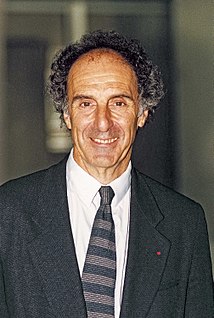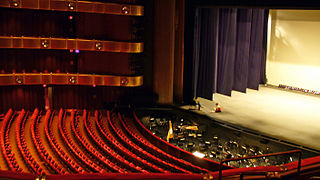
Glasgow Royal Concert Hall is a major concert and arts venue, in the city of Glasgow, Scotland. It is owned by Glasgow City Council and operated by Glasgow Life, an agency of Glasgow City Council, which also runs Glasgow’s City Halls and Old Fruitmarket venue.

Louise M. Davies Symphony Hall is the concert hall component of the San Francisco War Memorial and Performing Arts Center in San Francisco, California. The 2,743-seat hall was completed in 1980 at a cost of US$28 million to give the San Francisco Symphony a permanent home.
Concordia International School is a private, Christian, international school located in Pudong, Shanghai, China, founded in 1998. It is a part of the Lutheran Church–Missouri Synod. The school’s launch followed considerable feasibility research and numerous requests from the Hong Kong corporate community for a school.
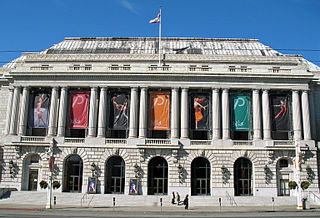
The War Memorial Opera House is an opera house in San Francisco, California, located on the western side of Van Ness Avenue across from the west side/rear facade of the San Francisco City Hall.
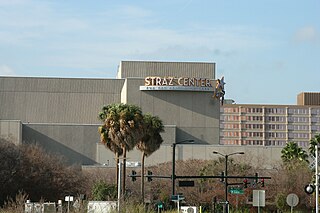
The David A. Straz Jr. Center for the Performing Arts opened its doors as the Tampa Bay Performing Arts Center, Tampa, Florida in July 1987 and has welcomed more than 16 million guests. The venue was renamed in November 2009 to recognize the generous donation, the largest individual philanthropic gift ever made to a cultural institution in the Tampa Bay area, of financier David A. Straz, Jr.
The Henry and Leigh Bienen School of Music, or Bienen School of Music, is an undergraduate and graduate institution devoted to musical performance and academics. Located on Northwestern University's campus in Evanston, Illinois, 12 miles north of downtown Chicago, the school was known as the Northwestern University School of Music from 1895 to 2008. In September 2008, the school was named to honor retiring University president Henry Bienen and his wife, Leigh Buchanan Bienen.
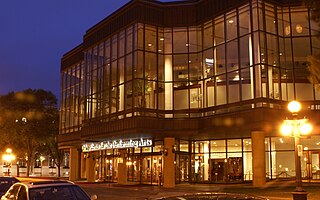
The Ordway Center for the Performing Arts is located in downtown Saint Paul, Minnesota and hosts a variety of performing arts, such as touring Broadway musicals, orchestra, opera, and cultural performers. It serves as a home to several local arts organizations, including the Minnesota Opera, The Saint Paul Chamber Orchestra, and The Schubert Club. Jamie Grant is currently the President and CEO. Rod Kaats is the Producing Artistic Director.
Zoellner Arts Center is an arts center located on the campus of Lehigh University in Bethlehem, Pennsylvania, in the United States. It opened in 1997, having been endowed by a $6 million gift from Robert Zoellner ('54) and his wife Victoria.
The University of Cincinnati – College-Conservatory of Music (CCM) is a performing arts college of the University of Cincinnati in Cincinnati, Ohio.

Kings Place is a building in London’s Kings Cross area, providing music and visual arts venues combined with seven floors of office space. It has housed the editorial offices of The Guardian newspaper since December 2008 and is the former headquarters of Network Rail and CGI.
The Seongnam Arts Center (성남아트센터) is the largest venue for cultural events in the city of Seongnam. It is in Yatap-dong in Bundang, within a few minutes' walk of Imae Station. The Seongnam Arts Center was first opened on 14 October 2005 by the Seongam Cultural Foundation.

Peoria Civic Center is a convention center in downtown Peoria, Illinois. It has an arena, theater, exhibit hall and meeting rooms. It opened in 1982 and completed an expansion to its lobby and meeting facilities in 2008.

The Schulich School of Music is one of the constituent faculties of McGill University in Montréal, Canada. The faculty was named after benefactor Seymour Schulich.
The Pikes Peak Center for the Performing Arts is a concert auditorium in Colorado Springs, Colorado. It serves as an entertainment, cultural, educational, and assembly center for the citizens of El Paso County, the Pikes Peak region, and the surrounding area.

The Canberra Theatre or officially the Canberra Theatre Centre, is the Australian Capital Territory’s central performing arts venue and Australia’s first performing arts centre, the first Australian Government initiated performing arts centre to be completed. It opened on 24 June 1965 with a gala performance by the Australian Ballet.

The Robert and Judi Newman Center for the Performing Arts is located on the University of Denver campus in Denver, Colorado at the southwest corner of E. Iliff Ave. and S. University Blvd. Robert and Judi Newman were asked by then Chancellor Daniel L. Ritchie to spearhead the fundraising effort for the Center. They also made a substantial donation to the Center's fundraising efforts. The Newman Center officially opened in the fall of 2002 with the commencement of classes, and the three main performance venues officially opened in spring 2003.
The Daryl Chase Fine Arts Center is a multi-venue visual and performing arts complex on the campus of Utah State University. It is named for Daryl Chase, the tenth president of USU, who served from 1954 to 1968.

The Center for the Performing Arts building was designed to house three major components of Fine Arts academics of Miami University: the Miami University Theater, the theater department, and the music department. Originally the programs were distributed between Fisher Hall and Hall Auditorium, and were moved to the Center for the Performing Arts after its construction.
Antoine Favre-Salomon was a Swiss watchmaker. In 1796, he invented a pocket watch with an embedded musical mechanism, which was later recognised as the first "comb" music box. One of his surviving music boxes has been displayed at the Shanghai Gallery of Antique Music Boxes and Automata in Pudong's Oriental Art Center.<ref>Shanghai Oriental Art Center. "Antique Music Box Gallery." and is now in the Reuge museum in Kyoto, Japan.
The Jefferson Performing Arts Center is a 1,065-seat live event venue located in Jefferson Parish in Metairie, Louisiana. The venue was designed to host grand operas, musicals, symphonies, choral concerts, ballet and private or corporate events. The venue is currently managed by SMG.



